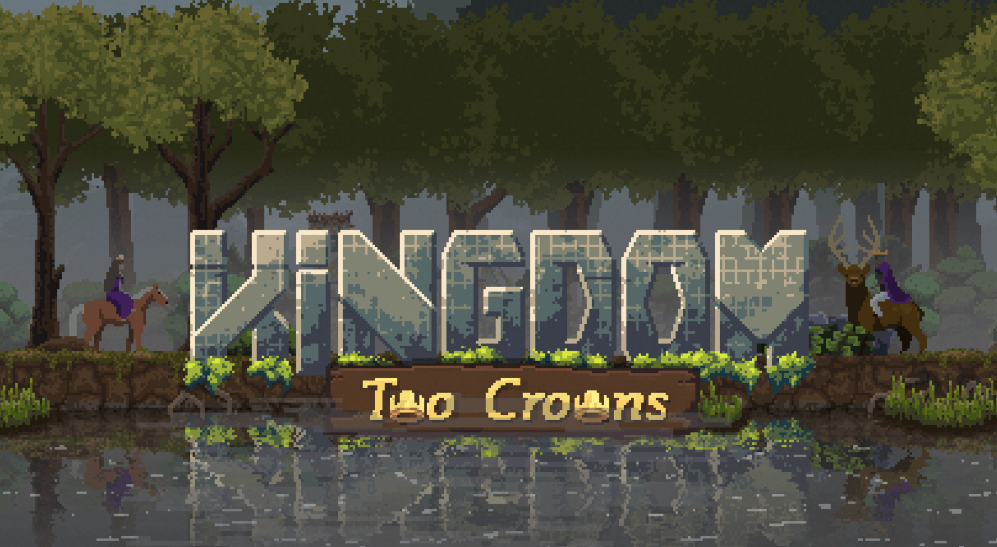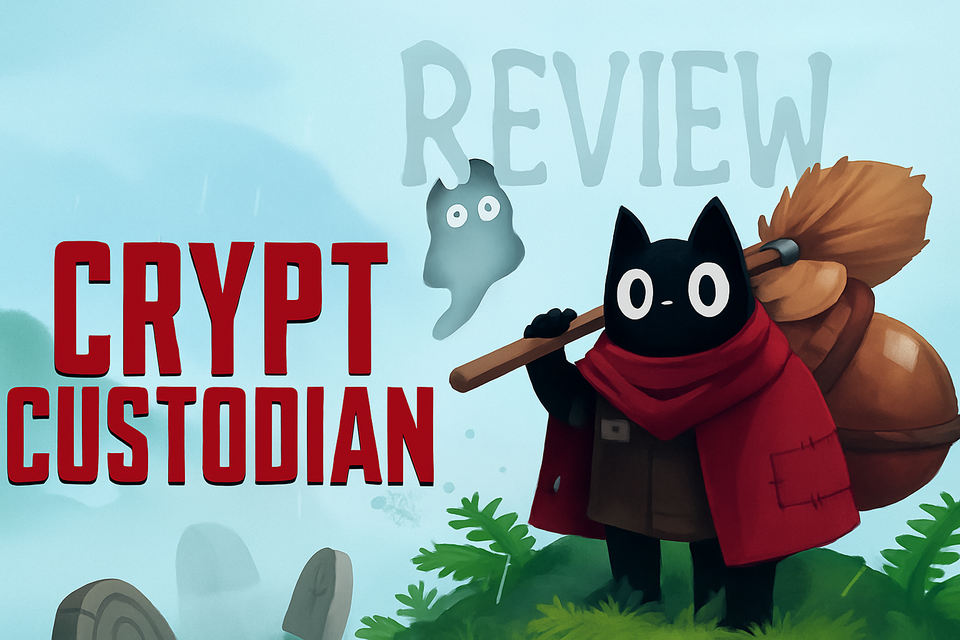Final Fantasy 1: A Journey to the Past and Back Again
A foundational title that would go on to define the genre of JRPGs.
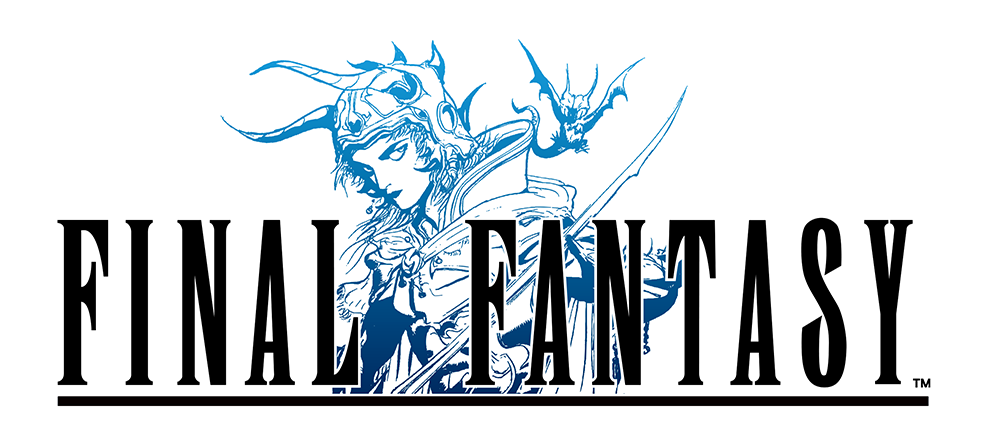
Final Fantasy is one of Japan's most legendary and longest-running video game series. Its cultural impact is profound and global. It's one of the foundational titles that would go on to define the genre of JRPG (Japanese role-playing game) and would secure a permanent legacy for its developer, a burgeoning company called Square, in video gaming history.
As we soon approach the 40th anniversary of this enchanting series, I thought now would be a great time to go back and revisit it with fresh eyes. This will be part one of a multi-part series of articles where I play, dissect, and discuss each of the first six titles in the franchise, spanning across the 8-bit and 16-bit eras. In this first installment, we'll take an in-depth look at the first title in the series, how it came to be, the stories behind it, and how it holds up today by modern gaming standards. This review will be based on the Pixel Remaster edition of the game on PC, but we'll also take a look at other versions of the game that have been released over the years, including the original NES release, to see what may have changed over the years, for better or for worse. Strap in as we dive into the fantastical world of Moogles, chocobos, crystals, swords, and sorcery that is the Final Fantasy universe.
History
How did Final Fantasy come to be?
Well before Final Fantasy became even a concept, Square was a fledgling company trying to find its footing in the Japanese computer-game market. They began as the computer-game software arm of Den-Yu-Sha (電友社), a power-line construction firm owned by Masafumi Miyamoto's family. Miyamoto managed to convince his father to let him develop games under the "Square" label, named solely for the simplicity of the logo he envisioned. And thus, Square was born and officially established as a video game development and publishing company in September of 1986.
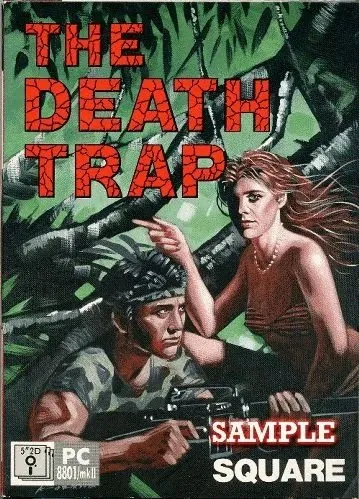
The Death Trap was developed before Square was even an established company. Together with its sequel, Will: The Death Trap II, Miyamoto was able to sell over 100,000 copies domestically in Japan – a truly remarkable achievement for an indie game developer at the time. These sales would provide the financial runway that Square so desperately needed to get off the ground.
Unfortunately, Miyamoto and Square would not be able to replicate the success of these first two titles so easily. Their subsequent PC releases (such as Alpha and Jumping) failed to capture any significant chunk of the market in the same way as their first two titles did. By mid-1987, Square was still mostly only known as a weird, experimental game developer and it lacked the brand recognition needed to gain any traction outside of niche PC gaming circles.
Luckily, it was around this time that a home gaming console called the Famicom (or the Nintendo Entertainment System as it was known outside of Japan) started to gain more and more traction in both the Japanese market and abroad. The NES was becoming a global sensation, and Square saw this as an opportunity to turn things around.
With the explosive growth of the home console market and the surprise success of rival company Enix's first foray into the RPG genre, Dragon Quest, Miyamoto decided to tap Hironobu Sakaguchi to create Square's own role-playing game, one that would eventually come to be Final Fantasy.
To say that the pressure was on would be an understatement. Hironobu Sakaguchi was merely an apprentice game designer who had only just joined the company. And given Square's extremely precarious financial state at this time, this would likely be the company's final chance at success. If this project failed, that would be the end of Square.
There are a multitude of rumors and legends that the name Final Fantasy itself came from the fact that this was a last-ditch effort by Square – that it was indeed the company's "final fantasy" as it were. But Sakaguchi himself explained later that the title was merely chosen to fit the aesthetically pleasing "FF" abbreviation and his first choice, Fighting Fantasy, was already taken by a series of choose-your-own-adventure game books created by Steve Jackson and Ian Livingstone. Ironically, Livingstone would actually become involved with Square much later on through their purchase of Eidos Interactive, but I digress.
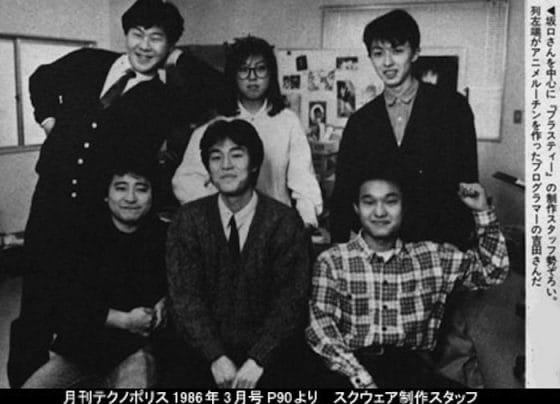
Sakaguchi pulled together a small "A-team" of developers consisting of only seven core staff members to begin crafting their entry into the RPG genre, Final Fantasy. Their key influences were actually Western computer RPGs like Ultima and Wizardry as well as tabletop RPGs like Dungeons and Dragons, which lead to designer Akitoshi Kawazu implementing key features that were uncommon in Japanese RPGs at the time, such as elemental weaknesses for monsters and being able to choose character classes freely. Some (but not all) of these features would go on to be staples of the Final Fantasy series throughout its long history.
This core team would include members that would play a role in most if not all entries in the series to come. Yoshitaka Amano created the game's iconic illustrations, and his style persists as a key part of the aesthetic of Final Fantasy still today. Nobuo Uematsu provided the musical score, including the game's title track which became another legendary composition that was used throughout the series' history. And last but not least, there was Nasir Gebelli, the game's one and only programmer. Nasir, an Iranian-American, was considered to be a genius coder and knew the 6502 assembly language inside and out from his days coding Apple II games. His coding was so efficient and legendary that many fans believe many of the more advanced mechanics of Final Fantasy 1 (like the airship functionality for example) would not have even been possible without him.
This small-but-mighty team defied the odds and on December 18, 1987, Final Fantasy was released on the Famicom in Japan. It became a surprise smash hit and, along with Dragon Quest, would spark a JRPG boom that would last decades. It also introduced players to concepts that would become staples of the series: elemental crystals, larger-than-life villains, epic stories, and the series' penchant for mixing elements of fantasy with a sci-fi twist. It also set certain JRPG conventions like having turn-based battles with a party of four, exploring a world map with vehicles, and a progression from fighting smaller, weaker monsters to slaying gigantic elemental fiends and time-traveling demons.
Final Fantasy finally made its way to Western shores on July 12, 1990, nearly three years after the game was first released in Japan. Localization was handled by Nintendo of America, which of course meant it had to be subjected to Nintendo's strict content guidelines. Overt religious symbols such as crosses were removed from churches in the game, the spell Death became RUB in the localized version to avoid any references to killing, and the final dungeon's six-pointed star floor pattern was simplified into a basic triangle to avoid any type of symbolism for the American release, along with a few other minor sprite changes here and there for various reasons.
Interestingly, Europe wouldn't officially get a release of Final Fantasy until over a decade later – no PAL region release existed in the NES era. Not until the PlayStation's Final Fantasy Origins collection was released in 2003 could European gamers experience the game that started it all. By this time the game was nothing more than a retro curiosity, but at least European gamers got to experience such an important title eventually. Better late than never, after all.
Releases and Versions
The first installment in the Final Fantasy series has seen a number of re-releases throughout the years. Here's a brief rundown of them, leading up to the Pixel Remaster edition which I played and will be reviewing later on in this article.
MSX2 Computer (1989, Japan): An early port to Microsoft's MSX2 standard, released on floppy disks. Nearly identical to the Famicom version but with longer load times and a few subtle upgrades. This is probably the most obscure port, having never left Japan.
Final Fantasy I/II (1994, Japan): Square compiled FF1 and FF2 together into a single cartridge later on in the Famicom's life. This version was also Japan-only and is mostly identical to the original title.
WonderSwan Color (2000, Japan): The first major remake of the game came on Bandai's 16-bit handheld system, the WonderSwan Color. This version overhauled the graphics to a Super Famicom-like pixel art style and added many quality-of-life enhancements. Battle menus were redesigned, new sprite-based cutscenes expanded the story in spots, and the infamous "ineffective attack" issue was addressed (party members would now retarget automatically if an enemy was defeated). This release also corrected some broken mechanics from the original Famicom version. There were several spells and the Intelligence stat which had absolutely no effect in the original game which were now made to work as intended. This version also included a dash button for faster walking, the ability to forget learned spells, multiple save slots, a quicksave option, and a single shared inventory for all characters. This version became the blueprint for future remakes, effectively bringing FF1 up to the standards of modern gaming while still retaining the core, classic gameplay.
PlayStation, Final Fantasy Origins (2002, Japan / 2003 NA & EU): Square (which was now Square Enix by this time) celebrated Final Fantasy's 15th anniversary through the release of Final Fantasy Origins on PS1, bundling FF1 and FF2 together. This version was based on the WonderSwan Color remake, but with even further polish and extras. It featured higher resolution 2D graphics, new effects, and a remastered soundtrack. Full-motion video sequences were also added, notably an opening FMV that depicts the Warriors of Light in a dramatic, action-packed montage before the title screen. This release also included a new "Easy Mode" which made enemies weaker, characters level up faster, and reduced the cost of items and spells. The translation was also completely redone from scratch, fixing some blatant errors and using more consistent terminology for spells and items.
Game Boy Advance, Dawn of Souls (2004): A year later, FF1 came to Nintendo's GBA in the Final Fantasy I & II: Dawn of Souls collection. This version took the PlayStation remake's easy mode and made it the default. It also used MP-based magic by default (instead of the old "spell charge" system) and introduced new items that had become staples of the series like Phoenix Downs. More bugs were fixed and this release also included some bonus content: four new bonus dungeons collectively referred to as the Soul of Chaos. Each dungeon unlocked after defeating one of the four Fiends in the original story, and were a challenging multi-floor labyrinth filled with bosses imported from later Final Fantasy titles.
PlayStation Portable, 20th Anniversary Edition (2007): Yet another enhanced version, this time for the PlayStation Portable. Released in celebration of the Final Fantasy series' 20th anniversary. This edition features widescreen, high-res 2D graphics, all four Dawn of Souls bonus dungeons from the GBA release, and a new exclusive dungeon called the Labyrinth of Time for an additional challenge. This version is often considered to be the most content-rich 2D version of the game. This same version was also ported to iOS and Android smartphones in 2010 to 2012.
NES Classic Edition (2016): The original Final Fantasy ROM was included as one of the 30 games included on Nintendo's NES Classic Mini console. This release is identical to the 1990 North American NES release, with no changes beyond the hardware it ran on.
Final Fantasy Pixel Remaster (2021-2023): Finally, we reach the most recent remake. This release is part of the Pixel Remaster series, which contains remastered versions of FF1 through FF6 with a consistent style. And, coincidentally, this is the version of the game I'll be discussing in this review!
Final Fantasy 1: Pixel Remaster Edition
A modern reflection on a classic JRPG


Now that we understand the history and backdrop of Final Fantasy 1, let's take a look at how it holds up in 2025.
The game begins with a brief cutscene to set the mood. Four elemental Fiends have unleashed chaos upon the land by destroying the earth, fire, water, and wind crystals. A mysterious prophecy speaks of four Warriors of Light, each carrying one of the crystals' power, who are destined to restore balance to the world.
After choosing a name and class for each of your four characters, you are thrust into the world of Final Fantasy at the besieged Kingdom of Cornelia where you rescue Princess Sarah from the castle's basement and earn the trust of the King's Knight, Cecil.
Thus begins the core gameplay loop of the game. Our task is now to travel to each of the four shrines, defeat the Fiend that has taken control of it, and restore the crystals.
To say that the plot is a bit simplistic would be an understatement. There isn't much to work with here, really. It's just an extremely basic adventure or hero's journey, albeit with a mild sci-fi twist thrown in the mix.
After restoring all four crystals, a magical portal opens to 200 years ahead in the future (there's that pseudo sci-fi part I was talking about). Stepping through it reveals a ruined, monster-infested world that is ruled by Chaos. Ultimately, the party must descend through multiple levels of the Chaos Tower and eventually defeat Chaos itself.
Upon defeating Chaos, the crystals' light purges the darkness and resets the world. Time reverts back to the present day, the dystopian future averted, and peace once again returns as the four legendary Warriors of Light fade into tales of legend.
And, well, that's it really. Yes, it's very basic. Yes, it's extremely linear. Yes, it's mostly pretty boring. But, in the context of an 8-bit game on a 40+ year old console, it's actually pretty impressive what they were able to do here.

I wanted to like this game. I really did. And the quality-of-life upgrades that are in the Pixel Remaster edition do help. But, honestly, it's still a grueling slog of a grindfest that doesn't have much else to offer to a modern gamer.
Yes, the game has a mini-map now. Yes, you can run instead of having to walk slowly everywhere. And yes, you can see treasure boxes on the map along with towns and other points of interest. This is all great, and it makes the game a lot more bearable. But we're still dealing with the underlying mechanics of a nearly 40-year-old game here.
The difficulty curve is also quite odd. I found the beginning of the game to be the most arduous, with little money to buy necessary items and long, tedious labyrinthine dungeons to deal with. In one of the game's first dungeons I found myself getting poisoned repeatedly. Poison never goes away once you're afflicted with it, unless you use an antidote, but antidotes are pricey in the early game and you're going to be strapped for gil almost certainly. This means that you have to spend a significant amount of time exiting dungeons early just to go back to town and heal up and restock on items. It's tedious, to say the least. And this is even with the reduced encounter chance of the Pixel Remaster edition. I honestly can't imagine how frustrating this must have been to play on the original Japanese Famicom release, as the original is rather infamous for its extremely high monster encounter rate.
But, as the game progresses and your party grows stronger, the game goes from annoyingly difficult to annoyingly easy rather quickly. Once you have enough gil put away to purchase 99 of all the basic items, you're pretty much set. With the relatively sparse monster variety and rudimentary boss battles, I found myself hardly ever having to think very much to win. In fact, I only ever actually died in the final battle of the game against Chaos, and that was mostly because of the worst RNG you could imagine.
Most of the difficulty comes in the form of simply being given very little information about where to go or what to do next. Some must-visit areas are not even visible on the world map and require you to just somehow stumble into them.

Don't get me wrong. I like a good challenge in my video games. But, this is just old-school 8-bit gaming at its worst. This type of game design is intended only to artificially lengthen the game and simply isn't a fun experience. So, I opted to use a walkthrough for the entirety of my playthrough. Don't judge me.
And, even with a walkthrough, it took me nearly 10 hours to complete the game. Which, to be fair, is kind of remarkable for a NES game. Those cartridges had barely any memory and the fact that they could fit all of this content (as sparse as it is by modern gaming standards) into a single cart is nothing short of a miracle. But, it's still a slog.
I found myself wanting to quit multiple times throughout my playthrough, and I am generally a fan of grind-y old-school RPGs. I simply can't emphasize enough how frustrating it is to be halfway through a dungeon only to be suddenly afflicted with poison on every character and then to run out of antidotes. The sheer amount of time it takes to get out of the dungeon and back to town is enough to make me want to throw the game in the garbage and never look back, but okay, maybe that's a little harsh.
The core JRPG elements are there. Battles can be fun and rewarding. Finding new gear can be exciting. Discovering secret items is always a treat. But there just isn't enough meat on the bone here to keep me interested in the game for 10+ hours.
But I get it, we have to walk before we can run. And Final Fantasy 1 is just the beginning of what would go on to become an epic franchise. And look, it's not like Dragon Quest was any better. If anything, it's even more of a tedious grindfest. But even still, it's hard to overlook the flaws if you're coming back to this game with fresh eyes in this age of modern gaming. We have certainly learned a lot about what makes a game fun, and game design has evolved dramatically since 1987.
All in all, I think this is a game that's better to be watched in the form of an abridged Let's Play on YouTube or by simply reading about it (like, say, on a blog somewhere on the internet for example). It has a special place in gaming history, and I respect Square and their small-but-mighty team in what they were able to accomplish. But does it hold up to modern gaming standards? Not by a long shot. So, if you're going to play it yourself, I'd highly recommend doing so with the aid of a good walkthrough. Otherwise, practice your patience and get ready for a nostalgic but extremely rough-around-the-edges experience.
All that being said, I give this first entry in the Final Fantasy series a 5 out of 10. It's worth playing if you're into the history of JRPGs or if you're old enough to have played it back in the day and are just looking for a little nostalgia hit. But, if you're under the age of 40 and prefer playing Fortnite and Roblox to old games only your parents have probably ever seen or heard of, it's probably not a bad idea to stay away and view it from afar. You're not really missing much.
I look forward to playing through the rest of the games in the Pixel Remaster series, though, to see where they truly hit their stride. May the Crystal's light always shine upon ye, brave warrior!
Final Verdict
Rating: 5/10
Play it if you really, really like retro JRPGs. Otherwise, skip it and spend your time playing the later titles in the series instead.

